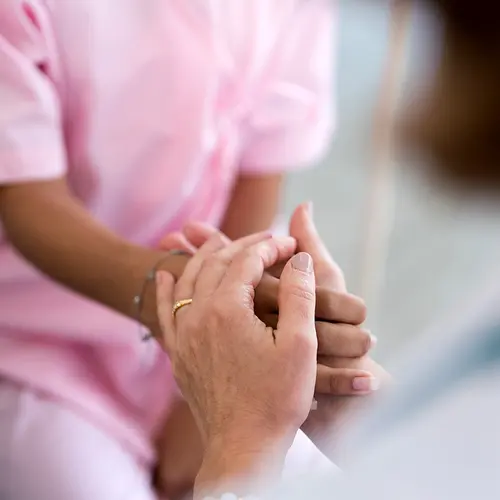You’ve completed treatment for breast cancer and it was successful. Your doctor says you’re in remission. That’s good news. But what exactly does it mean?
What Is Remission?
Remission is when the signs and symptoms of cancer have gone down or gone away. If you had a tumor in your breast and it shrank from successful treatment, your cancer is in remission.
Your doctor may also use the word response, which means the same thing.
Remission doesn't mean you’re cured. Cancer cells can still live in your body, even after treatment. In time, they may start to grow again.
The doctor will let you know if you’re in remission. It’ll be based on your test results and how long it’s been since you’ve had signs or symptoms of cancer. It has to be a month or longer to be considered in remission.
Complete Remission vs. Partial Remission
There are different kinds of remission:
Complete remission is when there are no more signs of cancer. If tests show your tumor is gone, or too small to see or measure, it means you’re in complete remission.
Another term for complete remission is complete response.
Partial remission is when your treatment reduced the cancer but didn’t make it go away completely. Doctors usually consider at least a 50% reduction in the size of a tumor to be partial remission.
Another term for partial remission is partial response.
How Long Will It Last?
There's no way to predict how long your cancer will be in remission. Everyone is different, and every cancer is different.
Will It Come Back?
It can. This is called recurrence. But if you’re in remission, your breast cancer probably won’t come back. Most people with breast cancer never have a recurrence. But it’s possible. Sometimes, cancer cells linger even after treatment and then multiply later. It may happen months or years after you finish treatment.
There are different types of recurrence:
Local recurrence is when the cancer returns to your breast, chest wall, or lymph nodes. If you had a lumpectomy, it may show up in the breast tissue that’s still there. If you had a mastectomy, it can affect the tissue in your skin or chest wall. If it returns to nearby lymph nodes, doctors will call it a regional recurrence.
Local recurrence usually happens within the first 5 years after you’ve been diagnosed.
Distant recurrence is when breast cancer spreads to other organs. It goes beyond your breasts and nearby lymph nodes. It may spread to your bones, liver, lungs, brain, or other organs.
You may hear the doctor call this metastasis.
There are effective treatments for breast cancer that comes back.
During regular follow-up visits, your doctor will check for symptoms or signs that your cancer is back. Talk to them about your personal risk of recurrence and what you can do about it.
How to Lower Your Risk of Recurrence
There are things you can do to make it less likely that your breast cancer comes back. Some treatments and lifestyle choices have been shown to lower the risk.
Here are treatments that may lower your risk of recurrence:
- Bone-building drugs may cut your risk of cancer coming back in your bones.
- Chemotherapy. Research suggests people who have chemotherapy have a lower risk of recurrence.
- Hormone therapy. If you have receptor-positive breast cancer, hormone therapy after your first treatment may lower your risk of it coming back.
- Radiation therapy. Research suggests people who have radiation to treat inflammatory breast cancer or a large tumor have a lower risk of it returning.
- Targeted therapy. Drug treatments that target the protein HER2 may lower your risk if your cancer makes extra HER2 protein.
Lifestyle choices that help prevent a recurrence include:
- Eating healthy food like vegetables, fruits, and whole grains. Try to limit alcohol to no more than one drink a day.
- Getting regular exercise. Be active.
- Staying at a healthy weight

